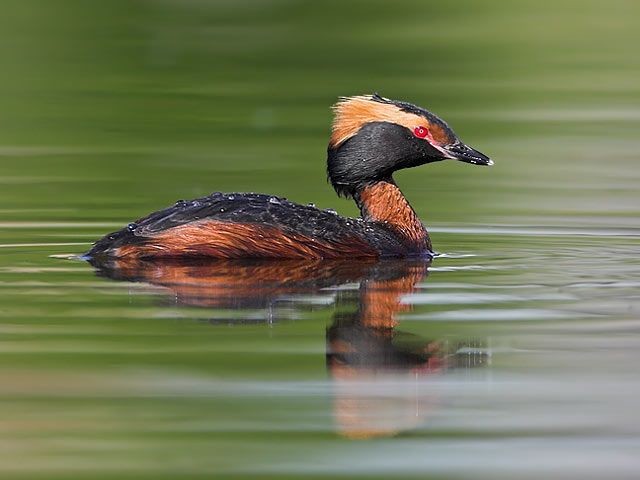Knowledge could be key to saving the Slavonian Grebe
New research is hoping to shed light on the lives of one of Scotland's most mysterious birds. The Slavonian Grebe only began breeding in the UK in 1908; its population today remains restricted to northern Scotland where latest counts have shown only 22 breeding pairs remain, the lowest level since monitoring records began. As it is a relative newcomer to the country, many aspects of the bird's behaviour remain unclear but conservationists are hoping further study will identify what may be driving a decline in numbers.

Slavonian Grebe, undisclosed site, Highland (Photo: Kev Joynes)
Stuart Benn, RSPB Scotland's Conservation Officer for the South Highlands, said: "This striking species only began breeding in Scotland just over a century ago so we still have a lot to learn about its behaviour and its movements in the winter months. What is clear is that while populations are thriving in Iceland and Norway, things aren't going so well here. It would be good to find out why that is and what things we, as conservationists, could be doing to turn around the fortunes of Scotland's Slavonian Grebe population. To do this we'll need to focus our research on key areas such as the role of weather and climate, when and why chicks die and compare our results with other countries whose populations are faring well."
Despite a worrying decrease in the UK population, 2010 has provided one of the best breeding seasons in recent years. A total of 17 chicks fledged this summer, six of these at RSPB Scotland's Loch Ruthven nature reserve which remains the best place in the country to see breeding Slavonian Grebes.
It is unclear exactly why after two years of no young Loch Ruthven's breeding pairs were successful in 2010, but it is thought a drier and less windy or stormy spring may have helped. Nests are destroyed by waves, so excess wind or stormy conditions can be damaging. Also this year, staff at the reserve have started introducing a range of conservation measures that they hope will make a difference to productivity among the local population.

Slavonian Grebe, undisclosed site, Highland (Photo: Steve Round)
Steph Elliott, Site Manager of RSPB Loch Ruthven nature reserve, added: "Our work for Slavonian Grebes is very much trial and error at the moment. Over the winter months, we will be carrying out some major restoration of sedge beds on the reserve. This is crucial nesting habitat for Slavonian Grebes and by removing sediment and areas of succession we can make sure the water depth is at the right level for the grebes to build their nests. We're also hoping to install nesting rafts next spring, which will hopefully protect vulnerable nests from damage and allow more chicks to fledge."

